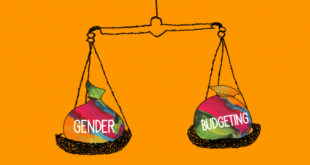- The External Affairs Minister of India (EAM), at the recent Global Technology summit, has asserted that the Covid-19 pandemic has brought India’s capabilities and need for more domestic production rather than unchecked globalization.
- He further held that, to foster tech growth, nations must seek more start-ups, supply chains and jobs to be created internally.
- This speech of EAM has sparked a debate between protectionism vs globalization.
Important points:
- Globalization envisages a borderless world or seeks a world as a global village.
- What today is referred to as globalization, started with the end of the Cold war and the disintegration of the Soviet Union in 1991.
- Globalization was the offshoot of two systems — democracy and capitalism — that emerged victorious at the end of the Cold War.
- It may be attributed to accelerated flow of goods, people, capital, information, and energy across borders, often enabled by technological developments.
- Trade without tariffs, international travel with easy or no visas, capital flows with few impediments, cross-border pipelines and energy grids, and seamless global communication in real-time appeared to be the goals towards which the world was moving.
De-Globalisation or Protectionism
- Protectionism refers to government policies that restrict international trade to help domestic industries.
- Tariffs, import quotas, product standards, and subsidies are some of the primary policy tools a government can use in enacting protectionist policies.
- Globalization had already begun to plateau or stagnate since the 2008-09 global financial crisis (GFC).
- This is reflected in Brexit and US’ America First Policy.
- Further, trade wars and the halting of WTO talks is another recognition of the retreat of globalization.
- These trends pave the way for an anti-globalization or protectionism sentiment, which may further amplify due to the spread of the Covid-19 pandemic.
Way Forward
- De-bureaucratisation: India needs to put in place such policies that improve its competitiveness, de-bureaucratise some sectors such as agriculture, and make labour laws less complicated.
- A holistic and easily accessible ecosystem, from the procuring of raw materials to the outlet of finished products, must be made available.
SOURCE: THE HINDU,THE ECONOMIC TIMES,MINT
 Chinmaya IAS Academy – Current Affairs Chinmaya IAS Academy – Current Affairs
Chinmaya IAS Academy – Current Affairs Chinmaya IAS Academy – Current Affairs



